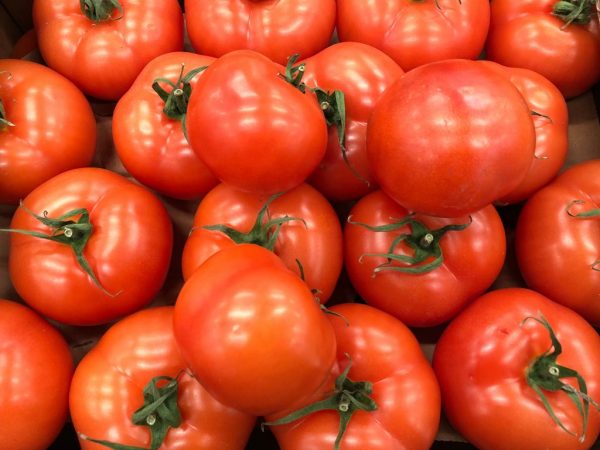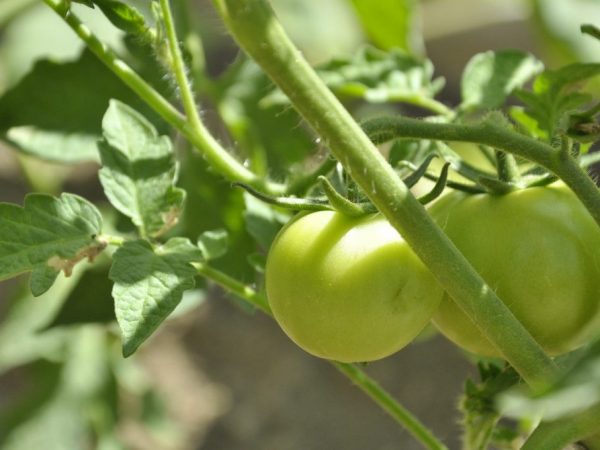Description of the Sakhalin tomato variety
The Sakhalin tomato is one of the recently appeared varieties of tomatoes that are distinguished by their productivity and early ripening.

Description of Sakhalin tomatoes
Characteristics of tomatoes
According to the description, the Sakhalin tomato variety has a number of characteristics:
- refers to varieties with an early or medium fruiting period;
- has a sour taste;
- produces round, medium-sized fruits;
- has a bush 50 cm high.
Tomatoes are grown in open fields and are suitable for cultivation in plastic and glass greenhouses. The fruits are suitable for all types of consumption, including fresh products such as salads or cuts and preserves. Canning whole fruits is especially convenient, because they are compact, round and relatively small.
The safety of the harvested crop is quite high. It reaches 2 months, thanks to the dense and elastic skin of the fruit. This characteristic allows you to transport vegetables over very long distances without worrying about their presentation. In two months, you can travel half of the country, while supplying vitamin products to the regions where growing tomatoes is considered a problem. This applies to the Far North and Siberia.
Description of the bush
Sakhalin is a determinant tomato variety.
About 6 brushes are tied on the bush. It is compact, has a cluster with ripening fruits and clusters with flower buds at the same time, needs a garter.
Description of fruits
Sakhalin begins to bear fruit 3 months after planting and until late autumn. Each cluster of the plant blooms at the same time, the fruits ripen at the same time, making it possible to remove the entire bunch of tomatoes entirely.
The fruits are red, do not have yellowness or green spots in the area of the stalk. The dense and elastic skin of vegetables protects the pulp from damage. The flesh itself has a dense structure, but at the same time it is fleshy and very tasty.

The plant must be tied up
Growing
The variety is sown for seedlings in March. Before sowing, the seeds are treated with stimulants. These can be industrial preparations or homemade solutions. These include extracts from aloe juice or weak solutions of potassium permanganate.
The seeds are soaked in the evening and left until the morning, after which they are washed with clean water to remove the remnants of stimulants, to protect the seed from chemical burns.
The treated seeds are spread on light soil mixed with rotted humus and ash. The seed layer is covered with soil up to 2 cm high.
Trays or other containers with seed are covered with foil to create a greenhouse effect. The inside is kept at a stable temperature of about 25 ° C. The soil is not watered, but sprayed from a sprayer. Heat, light and humidity are the components of the emergence of friendly seedlings.
After the appearance of 2 leaves, the seedlings dive into a larger container. After rooting, fertilizers are applied. During the growth period (from 55 to 70 days), seedlings are fertilized at least 3 times. For this, a complete complex fertilizer is used. A week before planting in a permanent place, Sakhalin tomato seedlings are hardened.
Disembarkation and care
Seedlings are planted in open ground when the last spring frosts pass, and the soil warms up enough. This usually happens in early June. The distance between planting rows should be within 70 cm, between plants in rows - 30-40 cm.
Ash is laid in each hole, the soil is watered, the seedling is planted. In the future, watering the plants is carried out exclusively at the root, not irrigating the leaves. The water should be warm and soft, free from heavy salts. As the tomatoes grow, they pick off the lower leaves, helping to circulate air between the bushes. This protects the tomatoes from rot and sweetness.
When watering, fertilizers are added to the water, contributing to the rapid growth and ripening of fruits. Water-soluble fertilizers are purchased from specialized stores. At the same time, it is important to observe the dosage: an excess of chemicals will prevent plants from developing normally and will cause diseases.
Sakhalin tomato harvest ripens throughout the summer period. Its stability allows the owners to start harvesting for the winter, to sell surplus products.


